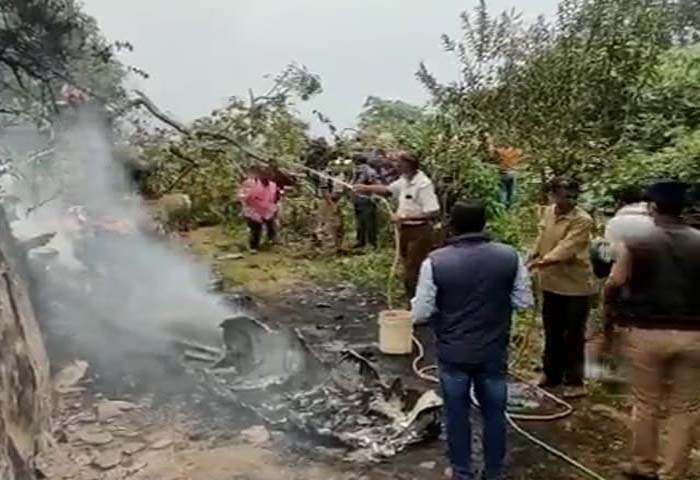New Delhi, December 18:
Air Chief Marshal Vivek Ram Chaudhari on Saturday said that protocols governing VVIP flights will be reviewed after a top inquiry panel submits its report on the Coonoor helicopter crash in which 14 people, including India’s first chief of defence staff (CDS) General Bipin Rawat, were killed.
“The VVIP protocols to fly will be reviewed. The review will be based on the findings of the court of inquiry into the crash,” he said on the margins of a graduation parade at the Air Force Academy in Dundigal near Hyderabad
Air Marshal Manavendra Singh, the IAF’s senior-most helicopter pilot and currently serving as the Air Officer Commanding-in-Chief of the IAF’s Bengaluru-based Training Command, is probing the CDS chopper crash. Singh has defied death multiple times in his 39-year military career, including once during one of the gravest emergencies in IAF history involving the Russian-origin Mi-17 helicopter.
Rawat and the others were killed in a Mi-17V5, an advanced variant of the Mi-17, crash near Coonoor in Tamil Nadu. Those killed included the only survivor of the crash, Group Captain Varun Singh, who died on Wednesday after battling for his life for a week. The others died instantly on December 8.
The inquiry into the crash is likely to be concluded in a few weeks.
“I wouldn’t like to pre-empt the findings of the court of inquiry as it’s a thorough process. It will investigate every single angle and look into every single aspect of what could’ve gone wrong, and come out with suitable recommendations and findings,” Chaudhari said.
The CDS helicopter crash which sent shock waves not only through the Indian military establishment but the entire country, has been dubbed a devastating setback for the ongoing military reforms and raised questions about succession in the armed forces.
At this point, it is not clear what went wrong with the helicopter in the final moments of the crash though the weather in the area where it went down did not have good visibility.
Rawat was on a visit to the Defence Services Staff College (DSSC) at Wellington to deliver a talk when the chopper crashed.
The Mi-17V5 took off from the Sulur air base at 11.48 am, and was scheduled to land in Wellington at 12.15 pm. But the air traffic control at Sulur lost contact with the helicopter at 12.08 pm when it was just seven minutes from its destination.
The air force currently operates around 145 such choppers — considered advanced, reliable and safe. India contracted 151 Mi-17V5 helicopters from Russia, and at least six of them have been lost in accidents since their induction a decade ago.
Developed by Russian Helicopters, the Mi-17V5 is designed to carry personnel, cargo and equipment. It can also airdrop assault forces behind enemy lines.
The helicopter, capable of day and night missions in adverse weather, is equipped with modern avionics, a self-defence system and advanced features that significantly enhance its survivability.
The Mi-17V5, which has an armoured cockpit, can be fitted with rockets, cannons and small arms for offensive roles. It has service ceiling of 6,000 metre, top speed of 250 kmph and a maximum range of 1,180 km with additional fuel tanks.
Chaudhari said India was continuously evaluating the threats from Pakistan and China and was well aware of the situation at the borders. “The stand-off with China still continues. Though disengagement of troops has taken place in certain areas in Ladakh, complete disengagement has not taken place. IAF will continue to maintain deployment at forward locations. We are prepared to take on any challenge that we may face in that area,” he added.




